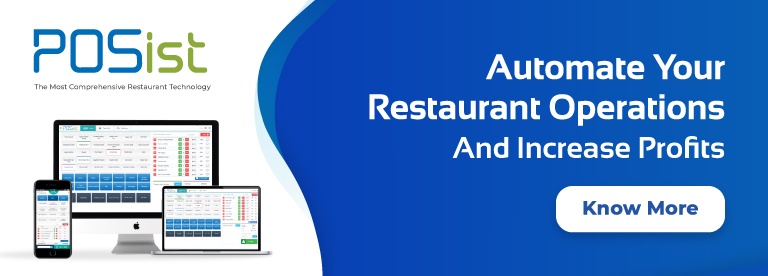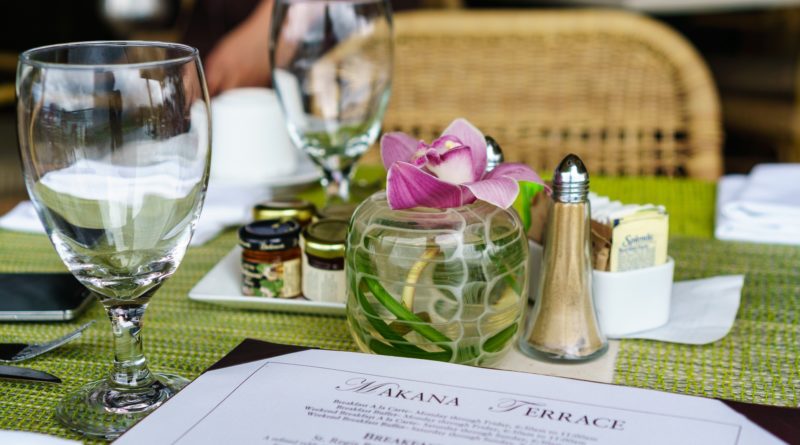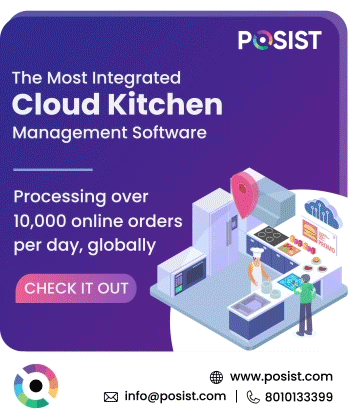Creating a menu seems like a relatively simple thing to do. Just list down all the items your Chef can cook for your restaurant, and you’re good to go. Except, not! Menu designing is an art and takes a lot of effort and calculations to price those items right. Often, restaurant owners get so involved in pricing their menu, that they forget the aesthetics of it. A well-designed restaurant menu with good restaurant menu descriptions can upsell the dishes itself, and influence your customers to order more, while a poorly designed menu can hamper your business.
1. Importance Of Menu Descriptions
Tantalizing food descriptions can make a huge difference. As per a study, an appetizing food description can provoke 45% of people to buy specific food items. The study also concluded that the following factors can influence customers to select food items:
- Knowing that the food is local
- The recipe has organic ingredients
- Explanation of ingredients in local language
- Food with sensory description
- Food with an emotional reference
By adding food descriptions, you can make your customers crave your food and yield higher revenue.
Restaurant menu descriptions play an essential role in the restaurant menu design. In most restaurants, descriptions are a list of all the ingredients that are used to prepare the dish. A stellar restaurant menu description can be so much more than that!
Create the menu descriptions in such a way that it leaves them salivating and ordering for more. An ideal restaurant menu description is a short one, explains what the dish is, and, ultimately, makes the customer want to order it. Avoid long, incomprehensible food descriptions that leave the customers puzzled about what the dish is. If customers don’t understand the restaurant menu description, they are most likely not to order that item. Hence, this makes it imperative that you avoid making these cardinal menu design mistakes.
2. The Essentials Of Writing Great Restaurant Menu Descriptions
A few lines that tell the story behind the food on the plate and evoke senses in the reader while recounting the ingredients and the process of creating the masterpiece can be considered as a functional item description. However, easier than said than done, creating a perfect balance between an appetizing sounding story, yet keeping it short and exciting can be quite tricky.
Try to surpass the jargon of writing appealing restaurant menu descriptions using these simple tips!
2.1. Talk about the Appearance, Texture, and Taste of the Dish
The restaurant menu description of the dish should ideally paint a picture to the reader about what the dish looks like, what its texture is, and how it tastes. Words such as vibrant, leafy, encrusted, buttered, etc., lend a luxurious appearance to the dish. Rich, creamy, delicious, tender, sweet, and more give an excellent feel to the dish by mere words.
2.2. Emphasize The Fine Quality Of Your Exotic (Read Expensive) Ingredients
If you are serving some of the finest and most expensive exotic items on the menu, you might as well mention it in the restaurant menu description. An unusual item on the menu automatically lends exclusivity to it. Not only would this tempt your customers to order an exclusive thing, but the clear lines would also help in justifying the high selling price.
Italian restaurant Artusi Ristorante does it quite well with their description of their dish Tomino-
“Finest imported soft cheese gently melting over toasted bread with sauteed mushrooms and Italian white truffle oil.”
2.3. Underline the Painstakingly Taken Effort to Create the Dish
As soon as you mention the extra effort required to prepare a particular dish, it automatically becomes special. Especially in fine-dine restaurants, customers come for the entire guest experience.
Consider the description of Kastoori Kabab of the famous ITC Bukhara-
“Succulent pieces of boneless chicken marinated in ginger and garlic, spiced with freshly pounded black peppercorns, gram flour and chargrilled with beaten egg yolk.”
This restaurant menu description beautifully paints a picture of tender pieces of boneless that have been pre-marinated and spiced and chargrilled. Words such as slow-roasted, pan-seared, etc. add to the individuality of the dish.
2.4. Lend a USP or Tell a Backstory About the Dish
When you tell a story about how your special Biryani was enjoyed by the Nizams of Hyderabad or a little anecdote about the most popular item on your menu, you not only pique the interest of your customer, but you also build your brand. Menu storytelling is a great way to attract customers.
Try to give ethnic names to your dishes to lend them authenticity. You can also add value to an ingredient by mentioning its geographic origin. You can turn dull, uninspiring ingredients into handpicked and chosen elements that create an appealing menu item.
2.5. Keep the Menu Descriptions Short and Easily to Understand
Often menu copywriters get carried away and write an entire paragraph of incomprehensible mumbo-jumbo of foreign words that still somehow fail to communicate the essence of the dish. It is essential to keep the description short, easy to read, yet be able to evoke the right emotions to eat. Get a restaurant menu description from the Chef, and then ask your copywriter to write a short copy. You can also write it yourself using the tips mentioned above and then get it to proofread.
2.6. Add Location To Suggest Quality
Knowing the geographical origin of any particular dish can make it sound exclusive and unique. It will intrigue the customer to know how it tastes. You can also trace the origin of spices used in the dish and add them to the menu description. Some people are fond of trying new delicacies from different origins. But, it can also backfire if they find unfamiliar ingredients. So, make sure to add more words about familiar ingredients and fewer words about unfamiliar ingredients used in the dish so that customers can connect to it.
2.7. Include Diets, Customs, Religions
As people from all communities are your customers, be they vegan or raw-vegan. It is important to include at least one dish in each category for every type of customer. You can also make separate columns for religion-based diets or add dishes as per specific health conditions, such as gluten-free food. It will reflect your sensitivity towards different communities and help build a loyal customer base.
2.8. Funny Menu Descriptions
If you write a humorous line with the description of every food item, it can instantly grab the customer’s attention. They may spread word-of-mouth about it or post it on social media. In any case, you will get organic advertisements and more customers. But you cannot add any random funny quotes, it should go well with your brand’s voice and food item.
You can create an entire menu with funny lines or add a section for kids. Also, never write anything that can hurt the religious and political sentiments of some people. It will negatively publicize your restaurant. Avoid sensitive topics.
2.9. Use Quality Photos For Your Online Restaurant Menu
You can upscale your online menu description by adding tempting top-notch quality photographs of the dish. Also, don’t add photos that can create disappointment in people’s minds when they visit your place and realize the photos do not match the dish served. Choose pictures that are most mouthwatering and make your menu more attractive. The picture can also help with SEO indexing of your restaurant’s website when you use original pictures and names.
2.10. Design Your Menu Based On Your Audience
Design a menu, add menu items, and write menu descriptions according to your customers. For instance, if your target customers are college students, add quirky elements to the menu. If most of your customers are kids, add cartoons or choose food item names that attract them more.
Customizing the menu as per your audience will help them connect with you and your food. It will help you with restaurant branding and marketing also. You can leverage the power of technology and add Posist QR code digital menu with easy-to-navigate templates to delight your customers.
3. Words to Include in Your Restaurant Menu Descriptions
Words can be tempting. Words that have been known to set the salivary glands working have been carefully placed in food descriptions on menus for ages. The following are the words most commonly used while writing restaurant menu descriptions.
- Vibrant, Tangy, Yummy, Zesty
- Caramelized, Wood-oven roasted, Crispy, Buttered
- Leafy, Tender, Creamy, Elegant
- Aromatic, Delicate, Drizzled, Encrusted
- Succulent, Velvety, Home-made, Infused
- Juicy, Kneaded, Local, Meticulously
- Melt-in-your-mouth, Organic, Pan-seared, Quintessential
- Slow-roasted, Seasonal, Time-tested, Unbeatable
Menu descriptions play an essential role in leaving an impact on the customers’ minds and hence propelling them to order more. A great backstory also leaves a long-lasting impression on the minds of the customers and propels them to come back and order again from your restaurant.
Find out the other ways you can leverage customer psychology to create a menu that garners higher sales here.



















Really great piece on writing menu descriptions. Most of the menu these days are either too long or use jargons that are not easy to understand. the description should be short and yet be written in a way that explains the dish and the ingredients. that is what customers are looking for primarily.
Writing menu description is as important as setting the food price. I am glad you have covered this aspect in your article because restaurant owners often forget to take this thing into account
It is the restaurant menu through which you talk to your customers. This makes it imperative that your restaurant menu descriptions are to the point, and that it delivers all the necessary information that will tempt the customers to order more.
This helped me find good words to do a homework assignment, thank you restaurant times!